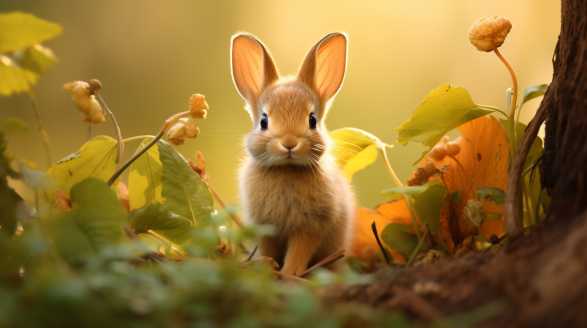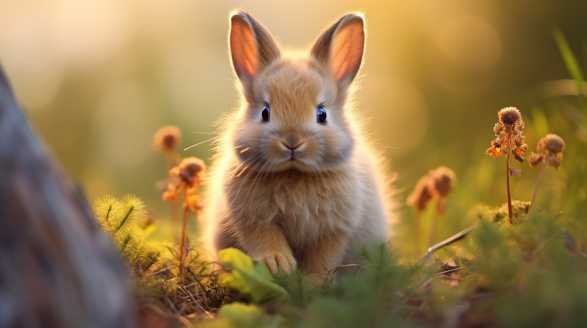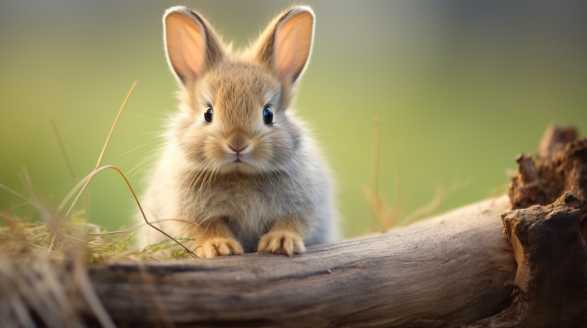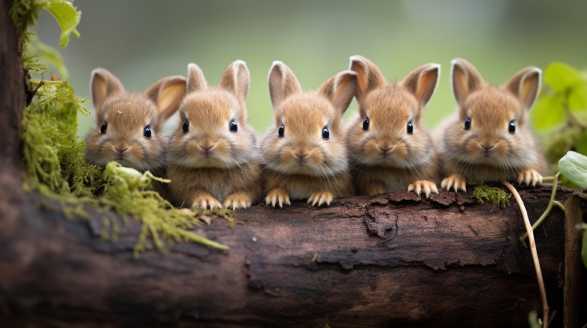Introduction
Hey there, rabbit enthusiasts! Are you ready to dive into the enchanting world of rabbits and explore their extraordinary reproductive abilities?
we will unravel the mysteries behind the rapid breeding capabilities of rabbits and discover the secrets behind their impressive population growth. From the basics of rabbit reproduction to the unique traits of different rabbit species, we will leave no stone unturned in our quest for knowledge about these adorable creatures.
So, why are rabbits known for their incredible reproductive capacities? How do they manage to have such large litters in such a short period of time?
But it’s not just about the numbers – we will also uncover the captivating family dynamics within rabbit warrens. From the roles of dominant males and females to the communication and grooming rituals that strengthen the bond between family members, we’ll discover the heartwarming stories behind the fluffy bunnies we adore.
So, whether you’re a seasoned rabbit lover or simply curious about the wonders of nature, this article will quench your thirst for knowledge about rabbit reproduction. Get ready to be amazed by the incredible world of bunnies and their ability to multiply like, well, rabbits!
Key Takeaways
- Rabbits have a remarkable ability to reproduce quickly and have large litters due to their short gestation period, multiple pregnancies, and rapid maturation rate.
- Different rabbit species have varying reproductive capacities, with some producing 2 to 6 litters per year and others having larger litter sizes of 6 to 10 kits.
- Rabbit families consist of a dominant male (buck) and female (doe) who have specific roles in creating and maintaining the warren, defending territory, reproducing, and caring for the young.
- Factors such as genetics, age, health, and environmental conditions can influence the number of babies a rabbit can have during each reproductive cycle.
- Rabbits have unique reproductive strategies, such as nesting habits, precocial offspring, and a brief interbirth interval.
- Rabbits communicate and bond within their families through various behaviors, such as vocalizations, scent-marking, and grooming rituals.
- While rabbits have high reproductive capacity, they face challenges such as predation and competition for resources that help regulate their population.
- Understanding the reproductive abilities of rabbits provides insight into the wonders of nature and the diversity of life on our planet.
Hello there! Have you ever wondered about the incredible reproductive abilities of rabbits?
Get ready to hop into a world of fluff and bunnies as we learn more about the incredible reproductive capabilities of these adorable creatures!
The Basic Biology of Rabbit Reproduction
Before diving into the specific rabbit species, let’s first understand the basics of rabbit reproduction. Rabbits belong to the order Lagomorpha and are known for their remarkable ability to reproduce quickly.
Mating and Gestation Period
When it comes to mating, rabbits are quite active. They have a relatively short gestation period, which typically ranges from 28 to 35 days.
This means that they release an egg or ovulate in response to mating.
After successful copulation, the fertilized egg travels into the doe’s uterus, where it develops into an embryo. It’s amazing how rapidly this process unfolds!
Different Rabbit Species and Their Reproductive Capacities
Now, let’s dive into the fascinating world of various rabbit species and their abilities to bring forth a legion of cute little bunnies. Brace yourself, because these numbers will leave you in awe!
Eastern Cottontail (Sylvilagus floridanus)
The Eastern Cottontail is one of the most common rabbit species found in North America. When it comes to reproduction, this adorable creature sure knows how to populate an area with its offspring.
Each litter typically contains 3 to 8 baby rabbits, known as kits. Just imagine the sheer number of fluffy little bunnies that can result from a single Eastern Cottontail pair.
European Rabbit (Oryctolagus cuniculus)
The European Rabbit is widely distributed and has been introduced to many parts of the world. Perhaps you’ve heard of their large-scale burrow systems known as warrens.
European Rabbits have a slightly longer gestation period compared to the Eastern Cottontail, averaging around 31 days. However, they compensate for this by producing litters containing a larger number of kits – typically around 6 to 10.
Similar to the Eastern Cottontail, European Rabbits can have multiple litters per year, usually ranging from 2 to 6 litters. It’s safe to say that these rabbits mean serious business when it comes to reproduction!
Snowshoe Hare (Lepus americanus)
Next on our list is the Snowshoe Hare. This hare species inhabits the boreal forests of North America and is known for its stunning winter coat that turns white during snowy months.
Snowshoe Hares have a gestation period of around 35 days, slightly longer than other rabbit species. However, their reproductive strategy differs from the previous two species we discussed.
But don’t let the lower number of litters fool you – Snowshoe Hares make up for it by having larger litter sizes, ranging from 2 to 8 leverets (that’s what baby hares are called!). Their unique reproductive strategy is perfectly adapted to the challenging conditions of their habitat.
Pygmy Rabbit (Brachylagus idahoensis)
Now, let’s shrink down to the tiny but mighty Pygmy Rabbit. This adorable ball of fur is native to the sagebrush habitats of the western United States.
With an average gestation period of 28 to 30 days, Pygmy Rabbits can have several litters per year, often ranging from 2 to 5. You might be wondering, how many little ones can they produce in each litter?
So there you have it – a journey through the reproductive capacities of different rabbit species. From the Eastern Cottontail’s frequent litters to the Pygmy Rabbit’s endearing size, these creatures continue to amaze us with their remarkable abilities.
Next time you spot a bunny hopping around, take a moment to appreciate the incredible world of rabbit reproduction. Who knew these fluffy creatures had mastered the art of baby-making to such an extraordinary degree?
Rabbit Families: Understanding the Size and Structure of Bunny Broods
As someone who has always been fascinated by nature and the animal kingdom, I never cease to be amazed by the diverse and intricate family dynamics found in different species. One such charming creature that captures my attention is the rabbit, specifically the dynamics of rabbit families.
Understanding Rabbit Family Units
Rabbits, commonly known for their adorable appearance and fluffy tails, are social animals that thrive in family units known as warrens. A warren typically consists of a dominant male, a dominant female, and their offspring.
The Dominant Male: Protector and Provider
The dominant male rabbit, often referred to as the buck, plays a crucial role in the family unit’s dynamics. Here are some key characteristics and responsibilities of the buck within the warren:
- Creating and Maintaining the Warren: The buck establishes the warren, burrowing underground tunnels and ensuring a safe and secure home for the family.
- Defending Territory: It is the buck’s responsibility to protect the warren and its occupants from potential threats. They do so by marking boundaries with scent and engaging in aggressive behavior towards intruding rabbits or predators.
- Finding Food: As the provider of the family, the buck actively searches for food sources and brings them back to the warren for the female and offspring.
The Dominant Female: Nurturer and Leader
The dominant female rabbit, also known as the doe, is the true matriarch within the rabbit family. Here are some essential roles and characteristics of the doe:
- Reproduction: The doe is responsible for birthing and raising the litter. Female rabbits have the fascinating ability to conceive again immediately after giving birth, leading to large brood sizes.
- Nursing and Caring for the Young: Does nurse their offspring, providing essential nutrients and ensuring their growth and development. They also groom and protect the young ones, teaching them vital survival skills.
- Decision-making: When it comes to making decisions for the family unit, the doe takes the lead. Whether it’s finding a new location for the warren or relocating the family to a safer spot, the dominant female guides the group.
Brood Size and Reproduction Patterns
Now that we understand the roles played by the dominant male and female within rabbit families, let’s explore the intriguing topic of brood size and reproduction patterns.
Large Litters: A Rabbit Specialty
Rabbits are known for their ability to reproduce at an astonishing rate, and their brood sizes can vary significantly. Here are a few facts regarding rabbit reproduction:
- Rapid Reproduction Cycle: Female rabbits have an extremely short gestation period, lasting approximately 28-31 days. This allows them to breed throughout the year.
- Impressive Brood Sizes: A typical rabbit litter can consist of 4 to 12 kits (baby rabbits). However, it’s not uncommon for litters to exceed 12 kits, emphasizing the rabbit’s remarkable reproductive capabilities.
- Multiparity and Overlapping Litters: Female rabbits can produce multiple litters in a year, thanks to a reproductive phenomenon known as superfoetation. This results in overlapping generations, further contributing to the growth and size of the rabbit population.
Survival Challenges and Natural Predators
While rabbits may have impressive brood sizes, their survival is not without challenges. Mother Nature has her ways of maintaining balance in ecosystems.
- Predators: Rabbits face predation from various animals, including foxes, coyotes, birds of prey, and snakes. These predators target rabbit families due to their vulnerability and high population densities.
- Competition for Resources: The availability of food and suitable burrowing locations plays a crucial role in the survival of rabbit families. Increased competition among individuals can impact the overall well-being of the warren.
Communication and Social Behavior
Rabbit families are not only defined by their reproductive patterns but also by their communication and social behavior. Here are some intriguing aspects to consider:
- Vocabulary of Sounds: Rabbits communicate with each other using a variety of sounds, ranging from soft murmurs to loud thumps. Each sound has a unique meaning, enabling effective communication within the warren.
- Scent-marking: Similar to other social animals, rabbits use scent marking to establish territories and communicate with other warrens. This behavior ensures peaceful coexistence between different rabbit families.
- Grooming Rituals: Grooming plays a vital role in bonding within rabbit families. Members of the warren groom each other as a sign of affection, reinforcing social relationships and reducing stress.
A World of Wonder
As I conclude this exploration into the world of rabbit families, it’s clear that these adorable creatures have a lot more to offer than meets the eye. From their large brood sizes to the intricate social dynamics within the warren, rabbits provide endless fascination for those curious enough to observe and appreciate their unique qualities.
The Reproduction Cycle of Rabbits: How Many Babies Can They Have?
Rabbits are known for their rapid breeding abilities, making them a fascinating species to study when it comes to the reproduction cycle. As someone with a keen interest in this topic, I have come across various intriguing facts and information regarding the number of babies a rabbit can have during its reproductive cycle.
The Marvel of Rabbit Reproduction
Rabbits are well-known for their exceptional ability to reproduce at an astonishing rate. Before diving into the specifics, let’s explore the various factors that contribute to the prolific nature of their reproductive cycle.
1. Sexual Maturity
Rabbits reach sexual maturity relatively early compared to many other species, typically between 3 to 8 months of age, depending on the breed and individual development. Once they reach sexual maturity, they can produce offspring throughout most of their lifespan.
2. Gestation Period
The gestation period of rabbits is relatively short, usually lasting about 28 to 31 days. This rapid gestation period is one of the primary reasons why rabbits can reproduce frequently and produce numerous babies.
3. Litter Size
Unlike many other animals, rabbits give birth to litters rather than single offspring. The average litter size varies depending on the breed, age, genetics, and environmental factors, but it generally ranges from 4 to 12 kits (the term used for baby rabbits).
Factors Affecting the Number of Babies
Several factors come into play when determining the number of babies a rabbit can have during each reproductive cycle. Understanding these factors will shed light on the variations in litter sizes among different rabbits.
1. Genetic Factors
Genetics play a crucial role in determining the fertility and litter size of rabbits. Breeds that have been selectively bred for larger litters are likely to produce more offspring.
2. Age and Health
As rabbits age, their fertility may decrease. Generally, younger rabbits have higher fertility rates than older ones.
3. Environmental Conditions
Environmental factors such as nutrition, housing conditions, and stress levels can influence a rabbit’s reproductive capacity. Proper nutrition, access to fresh water, and an environment free of excessive noise or disturbances can contribute to larger litter sizes.
Breeding Patterns
Understanding the breeding patterns of rabbits provides valuable insights into the frequency with which they reproduce and the potential number of offspring they can produce.
1. Seasonal Breeding
Many rabbits have a propensity for seasonal breeding, which means they are more likely to breed during specific times of the year. The breeding season often corresponds with an increase in daylight hours, providing rabbits with optimal conditions for mating.
2. Continuous Breeding
Some rabbit breeds, particularly those kept as pets, have overcome seasonal breeding patterns through domestication. These rabbits are known as “continuous breeders” and can reproduce year-round, given suitable conditions.
Rabbit Reproduction Strategies
To survive in the wild, rabbits have developed various reproductive strategies. These strategies allow them to adapt to their environment and maximize their chances of producing offspring successfully.
1. Nesting Habits
Rabbits construct nests, known as forms, where they give birth and care for their offspring. These nests are often built hidden in dense vegetation to protect the young from potential predators.
2. Precocial Offspring
Rabbits give birth to precocial offspring, which means the newborns are relatively developed and can fend for themselves shortly after birth. This adaptation allows the mother to focus on producing more offspring quickly.
3. Brief Interbirth Interval
The interbirth interval refers to the time between the birth of one litter and the next conception. For rabbits, this interval is exceptionally short, usually ranging from just a few days to a week.
The reproduction cycle of rabbits is truly remarkable, with their ability to produce numerous offspring in a relatively short span of time. Factors such as sexual maturity, gestation period, litter size, genetics, age, health, and environmental conditions all contribute to the number of babies a rabbit can have during each reproductive cycle.
The Furry Bunny Factory: Understanding the High Reproductive Capacity of Rabbits
As I sit here, bewildered and fascinated, I find myself contemplating the remarkable reproductive abilities of rabbits. It is truly perplexing how these cuddly creatures can multiply with such tremendous burstiness.
The Bunny Babymaker
Rabbits, famous for their ability to multiply rapidly, have earned the reputation of being prolific reproducers. Their unique reproductive system is primarily responsible for this outstanding capability.
Female Reproductive System
A female rabbit, also known as a doe, possesses an impressive ability to conceive and deliver offspring with unparalleled efficiency. Here’s an overview of her reproductive system:
- Ovaries: The doe’s reproductive journey begins with a pair of ovaries that house her eggs or ova. Unlike humans and most other mammals, rabbits have a remarkable ability to control ovulation. They can reabsorb or release eggs depending on various factors, such as stress levels or environmental conditions, ensuring optimal conditions for reproduction.
- Fallopian Tubes: Once the doe releases an egg, it travels through the fallopian tubes. If mating occurs during this window, the sperm can fertilize the egg, initiating the growth of a new life.
- Uterus: The fertilized egg, called a blastocyst, implants itself into the doe’s uterus. Interestingly, rabbits possess a unique adaptation called “embryonic diapause.” This allows the blastocysts to enter a state of suspended development until the mother rabbit is ready to support the growth of her offspring.
- Nest Building: Before giving birth, the doe engages in nest-building behavior to create a safe and comfortable environment for her soon-to-be-born babies. She uses soft materials like fur and hay to construct a cozy nest, ensuring her litter’s survival.
Male Reproductive System
Now let’s turn our attention to the male rabbit, also known as the buck, and his equally fascinating reproductive system:
- Testes: The buck’s reproductive journey begins with a pair of testes that produce millions of sperm cells. Rabbits, like many other mammals, rely on sexual reproduction, where fertilization occurs externally.
- Penis: During mating, the buck’s penis becomes erect. Interestingly, rabbits possess a retractable penis, which means it is concealed within a sheath when not in use. This adaptation helps protect the reproductive organ from harm or environmental factors.
- Copulatory Tie: After successful mating, a unique phenomenon known as the copulatory tie occurs. The buck and doe become physically connected, ensuring that the sperm is securely transferred to the doe’s reproductive tract.
- Post-Mating Behavior: Once the copulatory tie is complete, the buck often indulges in a peculiar behavior called a “fall-off.” This involves the buck tumbling backward, seemingly disengaging rather effortlessly.
Rabbit’s Reproductive Burst
Rabbits are infamous for their reproductive burstiness – the ability to reproduce at an alarming rate. This extraordinary capacity can be attributed to several factors:
Short Gestational Period
One fascinating aspect of rabbits’ reproductive biology is their remarkably short gestational period. It takes only about 30 to 32 days for a doe to give birth after mating, making rabbits one of the fastest reproducers among mammals.
Multiple Pregnancies
But the wondrous reproductive abilities of rabbits don’t stop there. These furry creatures can achieve multiple pregnancies simultaneously, thanks to a phenomenon called superfetation.
Litter Size
When it comes to litter size, rabbits take the cake! On average, a doe can deliver between 4 to 12 kits (baby rabbits) in a single litter, although larger litters are not unheard of.
Rapid Maturation
Another astounding characteristic of rabbits is their rapid maturation rate. Kits are born hairless and blind, but they develop at an incredibly fast pace.
By the age of 8 weeks, most kits are weaned and ready to embark on their own reproductive journeys.
The Bunny Balancing Act
While the high reproductive capacity of rabbits may seem advantageous, it also poses some challenges for survival and population control. Rabbits, in their own ecosystem, need to strike a delicate balance to ensure their species’ prosperity and prevent overpopulation.
Predation
Rabbits have evolved to be prey animals, meaning they serve as a primary food source for many predators. This natural predation helps control their population, preventing exponential growth that could threaten their ecosystem’s balance.
Maturity Delay
To prevent overcrowding and resource depletion, nature has bestowed upon rabbits the remarkable ability to exhibit delayed maturity. In adverse environmental conditions or situations where resources are scarce, rabbits can pause the growth and maturity of their reproductive organs until more favorable circumstances prevail.
Territorial Behavior
Rabbits showcase territorial behavior, which helps prevent excessive population density. By establishing territories, they reduce competition for resources, such as food and shelter, ensuring a sustainable environment for their population.
Before embarking on my quest to understand the high reproductive capacity of rabbits, I had little knowledge of the intricate mechanisms that drive their fertility. Now, having delved into the depths of their reproductive biology, I am left in awe of nature’s ingenuity.
Conclusion
As I conclude this journey into the fascinating world of rabbit reproduction, I can’t help but feel a sense of wonder and awe. These fluffy creatures have truly captivated my heart with their extraordinary ability to multiply like, well, rabbits!
But it’s not just about the numbers. Exploring the intricacies of rabbit families and their dynamic social structures has given me a deeper appreciation for these adorable creatures.
I’ve also learned that while rabbits may have an incredible reproductive capacity, they face challenges in maintaining a balanced population. Predation and competition for resources serve as natural checks to prevent overpopulation, highlighting the delicate equilibrium that nature maintains.
Understanding the reproductive abilities of rabbits has provided me with a glimpse into the wonders of nature and the diversity of life on our planet. It is a testament to the adaptability and resilience of these creatures.
So let’s take a moment to celebrate the enchanting world of rabbits and their fluffy fertility. Whether it’s the Eastern Cottontail with its frequent litters or the European Rabbit with its larger ones, each species has its unique qualities and contributes to the richness of our natural world.
Frequently Asked Questions
How Many Babies Do Rabbits Have?
Rabbits typically have litters of 3 to 8 babies, known as kits, on average.
How often do rabbits reproduce?
Rabbits have a gestation period of approximately 31 days, and they can reproduce several times a year.
At what age do rabbits start reproducing?
Rabbits generally reach sexual maturity between 3 to 8 months of age, depending on the breed and individual development.
Are rabbits good mothers?
Yes, rabbits are usually excellent mothers. They build nests for their babies and nurse them once or twice a day, providing thorough care and grooming.
Do male rabbits help raise the young?
No, male rabbits do not participate in raising the young. After mating, they have no role in the care of the babies.
How long do baby rabbits stay with their mother?
Baby rabbits typically stay with their mother until they are around 8 weeks old, at which point they become independent and can survive on their own.
Can rabbits have more than one litter at a time?
Yes, rabbits can have multiple litters in a year. They have very short pregnancies and can quickly reproduce, resulting in large populations if not controlled.

When Do Rabbits Stop Growing
Introduction When do rabbits stop growing? Let’s find out. Picture this: a cozy burrow, filled with soft hay and the pitter-patter of little paws. It’s here that we witness the magical journey of a cute baby bunny transforming into a majestic adult rabbit. We’ll dive deep into the secrets of rabbit growth, exploring the signs […]

All About Baby Rabbits
Introduction Ready to learn all about Baby Rabbits? Join me on an journey as we explore the wonderful world of baby rabbits. From their adorable twitching noses to their binky-filled antics, these little furballs are sure to melt your heart and leave you smiling from ear to ear. Now, I must confess, I am head […]

What Are Baby Rabbits Called
What are baby rabbits called? Let’s find out. Baby rabbits are commonly called kits or bunnies. These adorable furry creatures are born with closed eyes and no fur, but quickly grow into bouncy and lovable companions. Their playful nature and small size make them extra irresistible, captivating the hearts of both children and adults alike. […]

